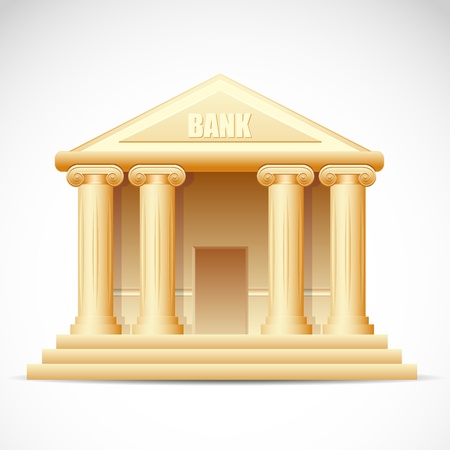1. Introduction to the Federal Reserve
The Federal Reserve, often referred to as “the Fed,” is the central banking system of the United States. It plays a crucial role in maintaining economic stability and ensuring the smooth functioning of financial markets. Established in 1913 through the Federal Reserve Act, the Fed was created in response to financial panics and banking crises that threatened the U.S. economy.
Structure of the Federal Reserve
The Federal Reserve is designed to operate independently while still being accountable to Congress. Its structure consists of three key components:
| Component | Description |
|---|---|
| The Board of Governors | A seven-member board based in Washington, D.C., responsible for setting monetary policy and overseeing the entire Federal Reserve System. |
| The 12 Regional Federal Reserve Banks | Located across different regions of the U.S., these banks implement policies, supervise financial institutions, and provide services to commercial banks. |
| The Federal Open Market Committee (FOMC) | A key policymaking body that determines interest rates and guides open market operations to control money supply and inflation. |
The Role of the Federal Reserve in the U.S. Economy
The Federal Reserve has several responsibilities that help maintain economic stability. These include:
(1) Regulating and Supervising Banks
The Fed ensures that banks operate safely and adhere to federal regulations to protect consumers and maintain confidence in the financial system.
(2) Conducting Monetary Policy
The Fed influences interest rates and money supply by adjusting policies such as setting the federal funds rate, conducting open market operations, and regulating reserve requirements.
(3) Maintaining Financial Stability
The Fed acts as a lender of last resort during financial crises, providing liquidity to prevent bank failures and economic downturns.
(4) Issuing Currency
The Federal Reserve is responsible for managing the supply of U.S. dollars, ensuring there is enough currency in circulation to support economic growth without triggering inflation.
2. Monetary Policy Tools
The Federal Reserve (the Fed) uses several key tools to influence the economy and maintain financial stability. These tools help control inflation, manage employment levels, and ensure economic growth. The main monetary policy tools include interest rates, open market operations, and reserve requirements.
Interest Rates
One of the most well-known tools of the Fed is adjusting interest rates, specifically the federal funds rate. This is the rate at which banks lend money to each other overnight. Changes in this rate impact borrowing costs for businesses and consumers.
(1) How Interest Rates Affect the Economy
- Lower Interest Rates: Encourage borrowing and spending, leading to economic growth.
- Higher Interest Rates: Discourage borrowing, slow down inflation, and stabilize the economy.
Open Market Operations (OMO)
The Fed conducts open market operations by buying or selling government securities (such as Treasury bonds) to regulate money supply and influence interest rates.
(2) Buying vs. Selling Securities
| Action | Effect on Money Supply | Impact on Economy |
|---|---|---|
| Buying Securities | Increases money supply | Lowers interest rates, stimulates growth |
| Selling Securities | Decreases money supply | Raises interest rates, slows inflation |
Reserve Requirements
Banks are required to keep a certain percentage of their deposits as reserves. The Fed can adjust this requirement to influence lending capacity.
(3) Effects of Changing Reserve Requirements
- Lower Reserve Requirement: Banks can lend more money, boosting economic activity.
- Higher Reserve Requirement: Limits lending ability, slowing down inflation.
![]()
3. Impact on Inflation and Employment
The Federal Reserve plays a crucial role in managing inflation and employment through its monetary policy tools. By adjusting interest rates and controlling the money supply, the Fed influences how much people spend, borrow, and invest. These actions directly impact inflation levels and job growth across the economy.
How the Fed Controls Inflation
Inflation occurs when prices rise over time, reducing the purchasing power of money. The Federal Reserve uses various strategies to keep inflation at a stable level:
(1) Adjusting Interest Rates
When inflation is too high, the Fed raises interest rates, making borrowing more expensive. This slows down spending and investment, helping to reduce inflation. Conversely, when inflation is too low, the Fed lowers interest rates to encourage economic activity.
(2) Open Market Operations (OMO)
The Fed buys or sells government securities to influence money supply. Buying securities injects money into the economy, while selling them removes excess cash, helping to control inflation.
(3) Reserve Requirements
The Fed sets reserve requirements for banks, determining how much they must keep in reserves versus how much they can lend. Increasing reserve requirements reduces the money supply, slowing inflation.
The Fed’s Role in Job Growth
The Federal Reserve also impacts employment by fostering conditions for job creation and economic expansion.
(1) Encouraging Business Investment
Lower interest rates make it cheaper for businesses to borrow money for expansion. This leads to more hiring and economic growth.
(2) Maintaining Economic Stability
By keeping inflation under control and ensuring financial stability, the Fed creates a favorable environment for businesses to grow and hire employees.
(3) Responding to Economic Crises
During recessions or financial downturns, the Fed may lower interest rates or introduce stimulus measures to support job growth and prevent mass layoffs.
Balancing Inflation and Employment
The challenge for the Federal Reserve is balancing inflation control with job growth. Raising interest rates too much can slow hiring, while keeping them too low may lead to rising inflation. Below is a comparison of how different monetary policies affect inflation and employment:
| Monetary Policy Action | Effect on Inflation | Effect on Employment |
|---|---|---|
| Raising Interest Rates | Lowers Inflation | May Slow Job Growth |
| Lowering Interest Rates | May Increase Inflation | Encourages Hiring |
| Tightening Money Supply | Keeps Prices Stable | Might Reduce Business Expansion |
| Increasing Money Supply | Might Cause Higher Inflation | Catalyzes Economic Activity |
The Federal Reserve constantly monitors economic indicators to adjust its policies accordingly. By carefully managing inflation and employment levels, the Fed helps ensure long-term economic stability.
4. The Federal Reserve’s Response to Economic Crises
When financial crises hit, the Federal Reserve (the Fed) plays a crucial role in stabilizing the economy. By adjusting monetary policy tools such as interest rates and asset purchases, the Fed aims to restore confidence, support financial institutions, and encourage economic recovery.
How the Fed Responds to Financial Downturns
The Fed employs several strategies to address economic crises. These measures are designed to ensure liquidity in financial markets, stabilize banks, and promote economic growth.
(1) Lowering Interest Rates
One of the first actions the Fed takes during a crisis is lowering the federal funds rate. A lower interest rate makes borrowing cheaper for businesses and consumers, encouraging spending and investment.
(2) Quantitative Easing (QE)
When traditional rate cuts are not enough, the Fed uses quantitative easing, purchasing large amounts of government bonds and other securities. This increases money supply and keeps long-term interest rates low.
(3) Emergency Lending Programs
The Fed can provide emergency loans to banks and financial institutions facing liquidity shortages. These lending programs help prevent bank failures and maintain stability in financial markets.
Case Studies: Past Federal Reserve Interventions
The Fed has responded to multiple economic crises throughout history. Here are some notable examples:
| Crisis | Year | Main Fed Actions |
|---|---|---|
| Great Depression | 1929-1939 | Created the Federal Deposit Insurance Corporation (FDIC), lowered interest rates |
| 2008 Financial Crisis | 2007-2009 | Implemented QE, lowered interest rates to near zero, bailed out key financial institutions |
| COVID-19 Pandemic | 2020-Present | Dropped rates to zero, launched new lending programs, expanded QE efforts |
The Impact of Fed Actions on Economic Recovery
The effectiveness of the Feds interventions depends on various factors, including public confidence and global economic conditions. While these actions often help stabilize markets and prevent deeper recessions, they can also lead to concerns such as inflation or excessive risk-taking in financial markets.
5. Challenges and Criticisms
The Federal Reserve plays a crucial role in shaping the U.S. economy through its monetary policies. However, these policies are not without limitations and criticisms. While the Fed aims to maintain economic stability, its actions sometimes lead to unintended consequences that raise concerns among economists, policymakers, and the general public.
Key Criticisms of Federal Reserve Policies
(1) Inflation Control vs. Economic Growth
One of the biggest challenges the Fed faces is balancing inflation control with economic growth. When the Fed raises interest rates to combat inflation, borrowing becomes more expensive, which can slow down business investments and consumer spending. On the other hand, lowering interest rates to stimulate growth can lead to excessive inflation.
| Policy Action | Intended Effect | Potential Risk |
|---|---|---|
| Raising Interest Rates | Reduce inflation | Slower economic growth |
| Lowering Interest Rates | Boost economic activity | Higher inflation risk |
(2) Impact on Income Inequality
The Federal Reserve’s policies can sometimes widen income inequality. Low interest rates and quantitative easing tend to benefit asset holders, such as stock investors and homeowners, while those without significant financial assets may see little direct benefit. Critics argue that this approach disproportionately favors wealthier individuals.
(3) The Risk of Asset Bubbles
When interest rates remain low for extended periods, investors often seek higher returns in riskier assets, which can contribute to speculative bubbles in markets like real estate or stocks. If these bubbles burst, they can lead to financial crises similar to what happened during the 2008 financial meltdown.
Long-Term Effects on the Economy
(1) Dependency on Low Interest Rates
The prolonged use of low interest rates can create an economy overly dependent on cheap borrowing. Businesses and consumers accustomed to low rates may struggle when rates eventually rise, leading to potential financial instability.
(2) Limited Tools During a Crisis
The Fed’s ability to respond to economic downturns is constrained when interest rates are already low. If another major crisis occurs while rates are near zero, the Fed may have fewer options available to stimulate the economy effectively.
(3) Uncertainty in Policy Outcomes
The long-term effects of certain Federal Reserve policies remain uncertain. For example, large-scale asset purchases (quantitative easing) helped stabilize markets during crises but also expanded the Fed’s balance sheet significantly. How this will impact future economic stability is still debated among experts.


